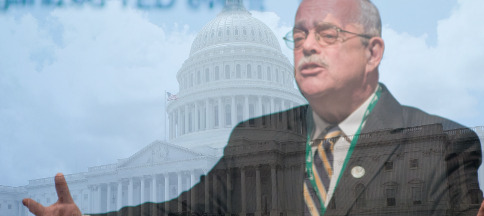- The FAIR Act has been introduced – pushing for a 7.4% raise for feds.
- This is the first indicator of the 2025 pay raise until the white house budget.
- A history of the FAIR Act vs. the actual raise that happened.
The FAIR Act has been reintroduced every year since 2016 and has not once made it out of Congress, but it acts a good early indicator as to what to actually expect for the next year’s annual pay raise for federal employees. The actual percentage always ends up lower than what Connolly recommends in each year’s FAIR Act- and this year, along with Hawaii Congressman Schatz, the bill is pushing for the 2025 pay raise to be 7.4%. Last year’s proposed legislation called for an 8.7% raise and it ended up being 5.2% - the biggest in decades. Supporters of the FAIR act argue that the gap between private sector jobs and comparable federal jobs is too wide and getting worse. A larger raise would help narrow the gap, helping with hiring and retention.
Check out our webinar on “Financial Planning for Feds”
At some point in March, the White House will publish its suggested budget for the upcoming fiscal year and this includes what the President feels the pay raise the federal workforce should be. Without action from Congress, this number ends up being the actual raise. Like last year, the White House suggested 5.2% and that’s what ended up happening despite the National Federation of Federal Employees strongly supporting the 8.7% in last year’s FAIR act. Also important to note that these figures are likely averages when factoring locality pay. The “across-the-board” raise suggested in the bill is likely 6.9% that averages out at 7.4% with locality.
FAIR Act History
The first version of the FAIR Act was in 2016 and was trying to set the federal pay raise for 2017. This year’s bill contains the second largest raise suggested in the FAIR acts with last year’s suggestion of 8.7% being the largest.
| Year of FAIR Act | Pay Raise Year | Proposed | Actual |
| 2016 | 2017 | 5.3% | 2.6% |
| 2017 | 2018 | 3.2% | 1.6% |
| 2018 | 2019 | 3.0% | 1.9% |
| 2019 | 2020 | 3.6% | 3.1% |
| 2020 | 2021 | 3.5% | 1.0% |
| 2021 | 2022 | 3.2% | 2.7% |
| 2022 | 2023 | 5.1% | 4.6% |
| 2023 | 2024 | 8.7% | 5.2% |
| 2024 | 2025 | 7.4% | ???? |
---
Until Next Time,
The information has been obtained from sources considered reliable but we do not guarantee that the foregoing material is accurate or complete. Any opinions are those of Serving Those Who Serve writers and not necessarily those of RJFS or Raymond James. Any information is not a complete summary or statement of all available data necessary for making an investment decision and does not constitute a recommendation. Investing involves risk and you may incur a profit or loss regardless of strategy suggested. Every investor’s situation is unique and you should consider your investment goals, risk tolerance, and time horizon before making any investment or financial decision. Prior to making an investment decision, please consult with your financial advisor about your individual situation. While we are familiar with the tax provisions of the issues presented herein, as Financial Advisors of RJFS, we are not qualified to render advice on tax or legal matters. You should discuss tax or legal matters with the appropriate professional. **





